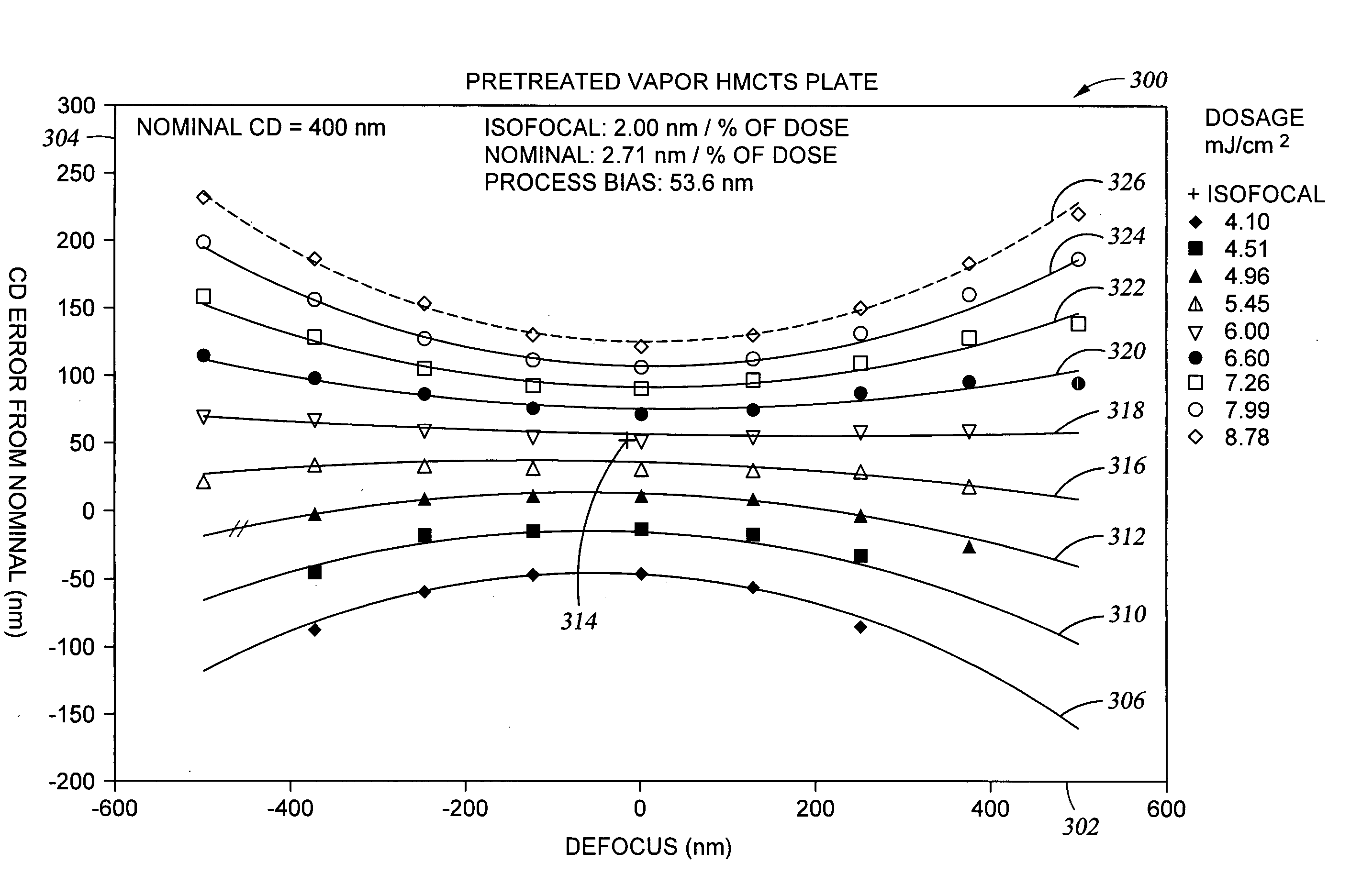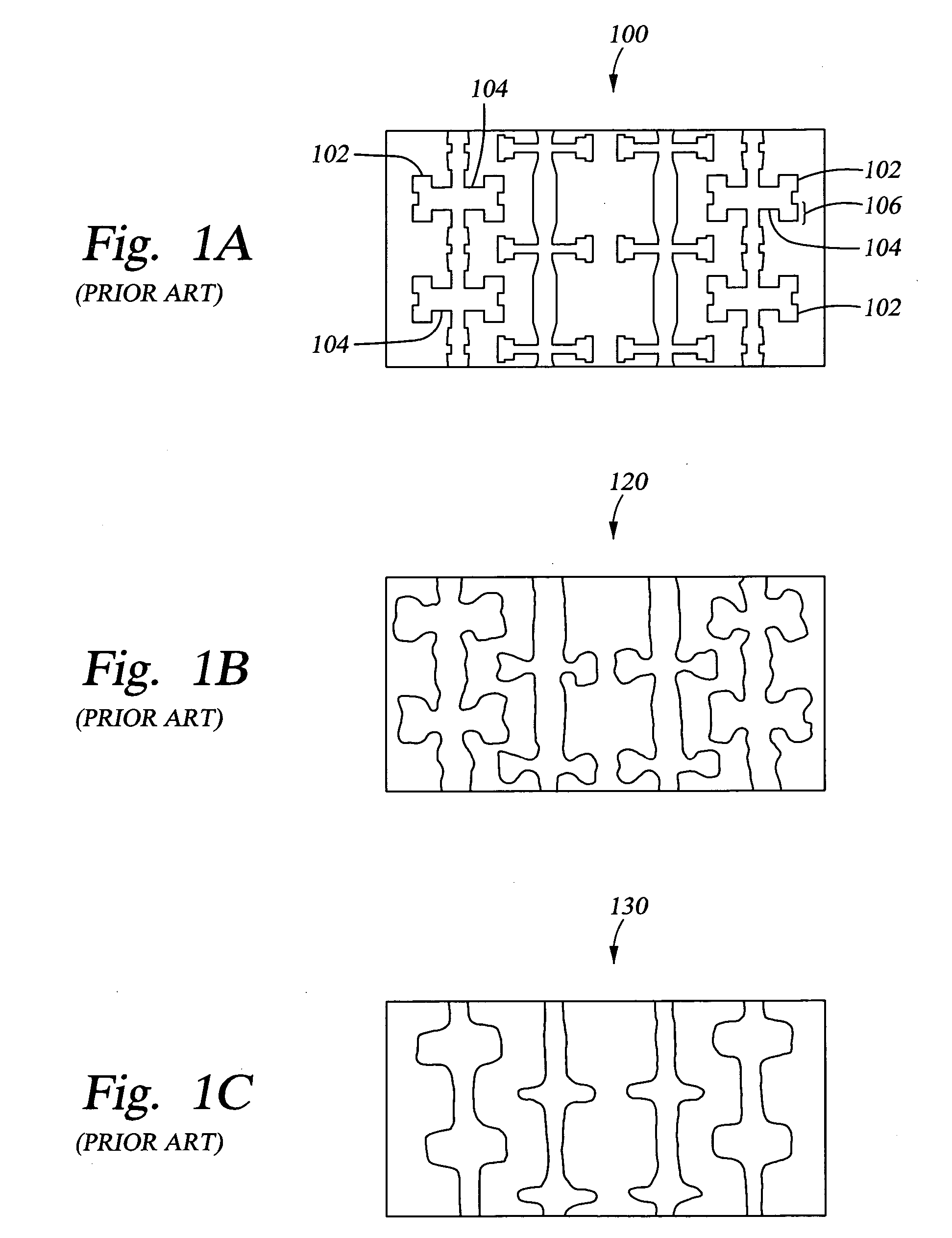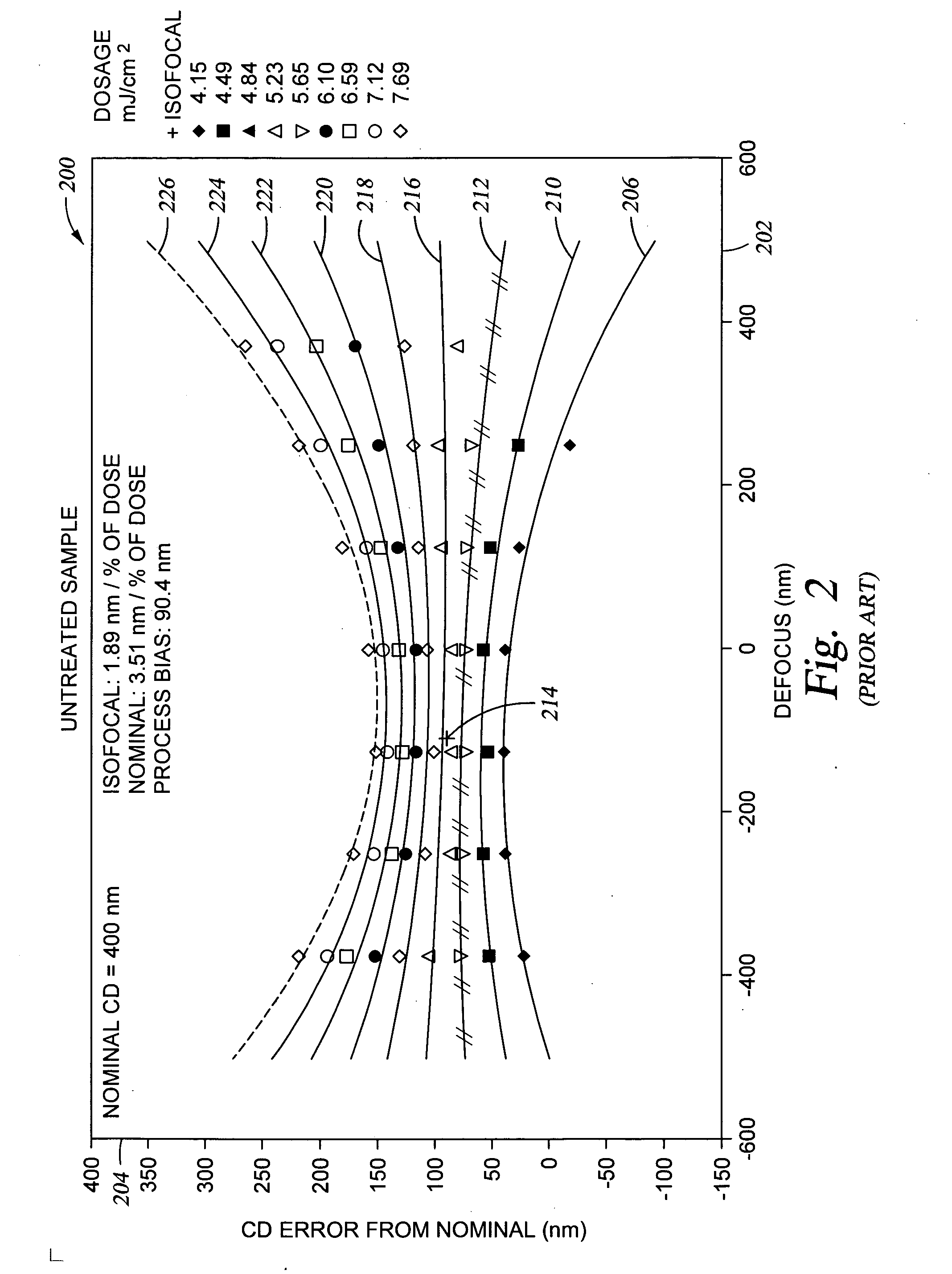Method of reducing the average process bias during production of a reticle
a technology of lithographic mask and process, applied in the field of lithographic mask production, can solve the problems of process bias, loss of resolution, process window for this feature size which would enable a manufacturing process, etc., and achieve the effect of improving the etch resistance of the pattern developed photoresist and the size of the developed photoresist mask features
- Summary
- Abstract
- Description
- Claims
- Application Information
AI Technical Summary
Benefits of technology
Problems solved by technology
Method used
Image
Examples
example two
[0048] The reticle substrate which was used to prepare test specimens for the example embodiments of the invention was the same as that used to prepare the test specimens for the comparative Example One, with the exception that the developed, patterned photoresist was treated subsequent to the spin dry cycle of the development process. The photoresist was treated with a silicon-containing reagent to add volume to the developed pattern feature size.
[0049] There are two different methods which may be used for treatment with a silicon-containing agent, a vapor phase reaction and a wet phase reaction. The data shown in FIG. 3 was for a vapor phase treatment with a silicon-containing agent. In the vapor phase reaction, the test specimen reticle plate was placed in a Y.E.S.—1224 vacuum oven, available from Yield Engineering Systems of Santa Clara, Calif. This large vacuum oven provides temperature uniformity (±2 EC). The system pumps down in the range of about 1 Torr, and purges up to ne...
PUM
| Property | Measurement | Unit |
|---|---|---|
| wavelengths | aaaaa | aaaaa |
| wavelengths | aaaaa | aaaaa |
| feature size | aaaaa | aaaaa |
Abstract
Description
Claims
Application Information
 Login to View More
Login to View More - R&D
- Intellectual Property
- Life Sciences
- Materials
- Tech Scout
- Unparalleled Data Quality
- Higher Quality Content
- 60% Fewer Hallucinations
Browse by: Latest US Patents, China's latest patents, Technical Efficacy Thesaurus, Application Domain, Technology Topic, Popular Technical Reports.
© 2025 PatSnap. All rights reserved.Legal|Privacy policy|Modern Slavery Act Transparency Statement|Sitemap|About US| Contact US: help@patsnap.com



